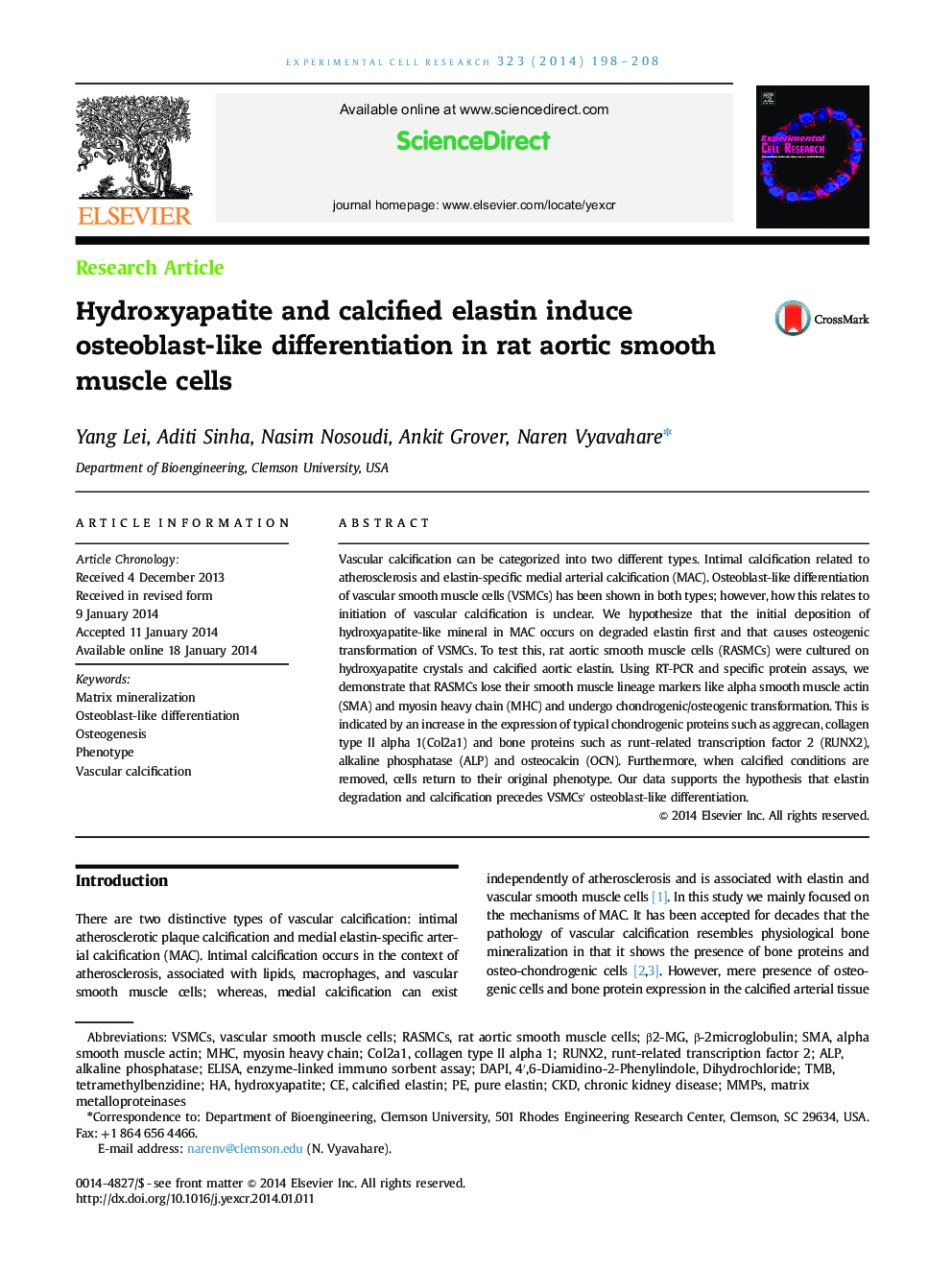| کد مقاله | کد نشریه | سال انتشار | مقاله انگلیسی | نسخه تمام متن |
|---|---|---|---|---|
| 10904043 | 1086553 | 2014 | 11 صفحه PDF | دانلود رایگان |
عنوان انگلیسی مقاله ISI
Hydroxyapatite and calcified elastin induce osteoblast-like differentiation in rat aortic smooth muscle cells
ترجمه فارسی عنوان
هیدروکسی آپاتیت و الاستین کلسفید باعث تمایز استئوبلاست مانند در سلول های عضلانی صاف رت
دانلود مقاله + سفارش ترجمه
دانلود مقاله ISI انگلیسی
رایگان برای ایرانیان
کلمات کلیدی
RASMCsMmpsCol2a1VSMCsRUNX2DAPITMB4′,6-diamidino-2-phenylindole, dihydrochloride - 4 '، 6-دیامیدینو-2-فنیلینول، دی هیدروکلرایدalpha smooth muscle actin - آلفا آکتیو عضله صافALP - آلکالن فسفاتازAlkaline phosphatase - آلکالین فسفاتاز یا فسفاتاز قلیاییenzyme-linked immuno sorbent assay - آنزیم وابسته به ایمنی جذب آزمونOsteogenesis - استخوان زاییchronic kidney disease - بیماری مزمن کلیویtetramethylbenzidine - تترامتیل بنزیدینELISA - تست الیزاSMA - دبیرستانMyosin heavy chain - زنجیره سنگین میوزینRat aortic smooth muscle cells - سلول های عضلانی صاف آئورت موشVascular smooth muscle cells - سلول های عضلانی صاف عروقیRunt-related transcription factor 2 - عامل رونویسی مرتبط با روت 2Phenotype - فنوتیپMatrix metalloproteinases - متالوپروتئیناز ماتریکسMHC - مجموعه سازگاری بافتی اصلیCKD - نارسایی مزمن کلیهHydroxyapatite - هیدروکسی آپاتیتMatrix mineralization - کانی سازی ماتریکسVascular calcification - کلسیفیکاسیون عروقی
موضوعات مرتبط
علوم زیستی و بیوفناوری
بیوشیمی، ژنتیک و زیست شناسی مولکولی
تحقیقات سرطان
چکیده انگلیسی
Vascular calcification can be categorized into two different types. Intimal calcification related to atherosclerosis and elastin-specific medial arterial calcification (MAC). Osteoblast-like differentiation of vascular smooth muscle cells (VSMCs) has been shown in both types; however, how this relates to initiation of vascular calcification is unclear. We hypothesize that the initial deposition of hydroxyapatite-like mineral in MAC occurs on degraded elastin first and that causes osteogenic transformation of VSMCs. To test this, rat aortic smooth muscle cells (RASMCs) were cultured on hydroxyapatite crystals and calcified aortic elastin. Using RT-PCR and specific protein assays, we demonstrate that RASMCs lose their smooth muscle lineage markers like alpha smooth muscle actin (SMA) and myosin heavy chain (MHC) and undergo chondrogenic/osteogenic transformation. This is indicated by an increase in the expression of typical chondrogenic proteins such as aggrecan, collagen type II alpha 1(Col2a1) and bone proteins such as runt-related transcription factor 2 (RUNX2), alkaline phosphatase (ALP) and osteocalcin (OCN). Furthermore, when calcified conditions are removed, cells return to their original phenotype. Our data supports the hypothesis that elastin degradation and calcification precedes VSMCsâ² osteoblast-like differentiation.
ناشر
Database: Elsevier - ScienceDirect (ساینس دایرکت)
Journal: Experimental Cell Research - Volume 323, Issue 1, 15 April 2014, Pages 198-208
Journal: Experimental Cell Research - Volume 323, Issue 1, 15 April 2014, Pages 198-208
نویسندگان
Yang Lei, Aditi Sinha, Nasim Nosoudi, Ankit Grover, Naren Vyavahare,
